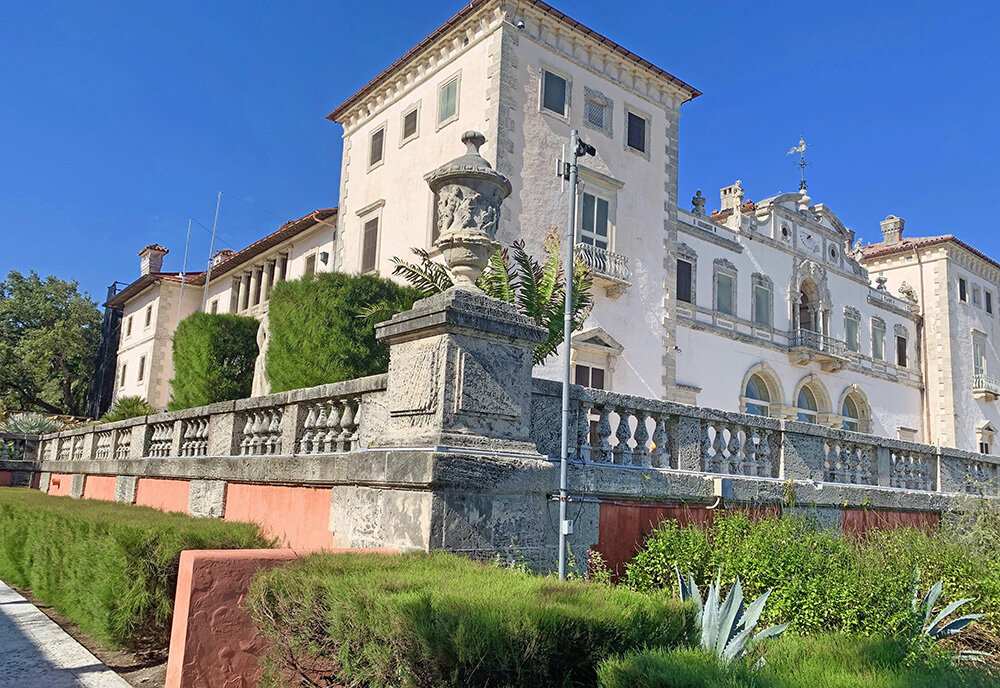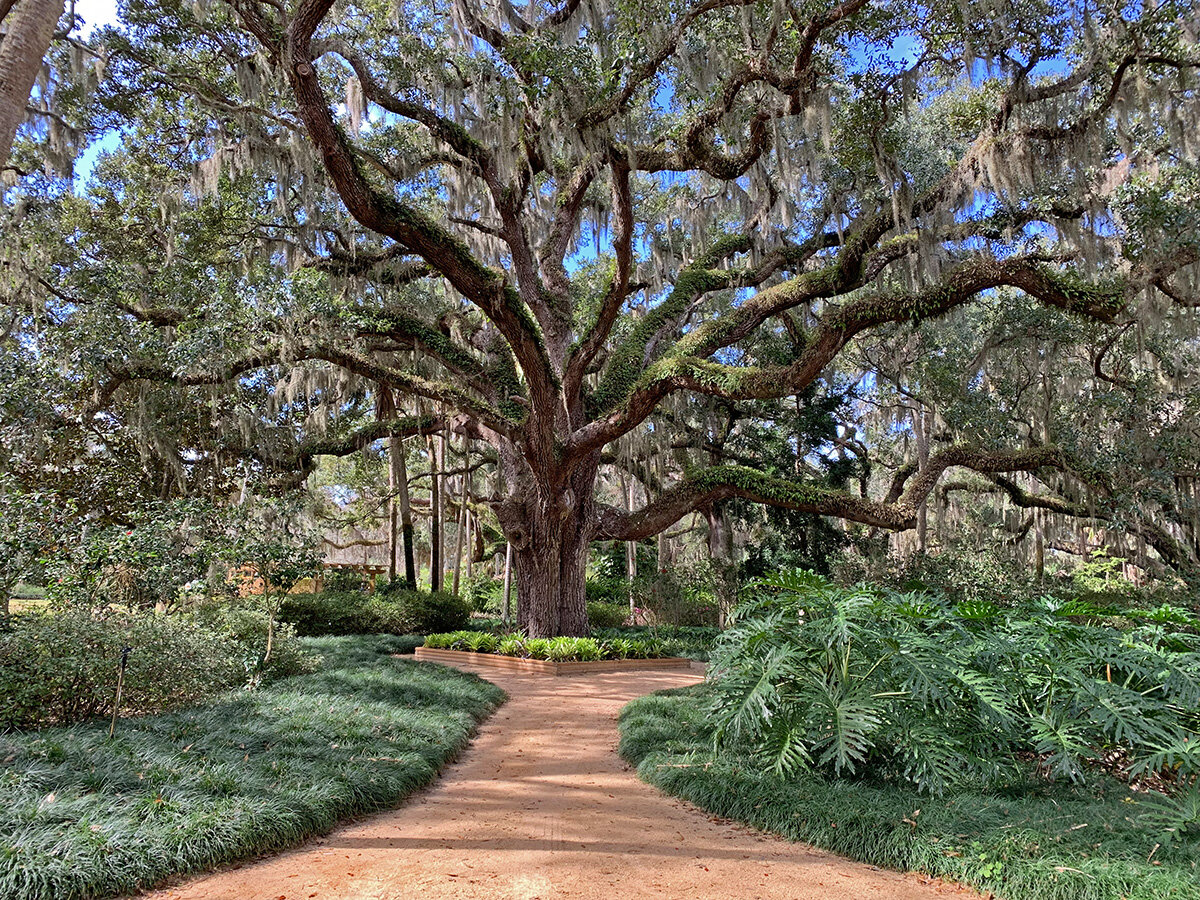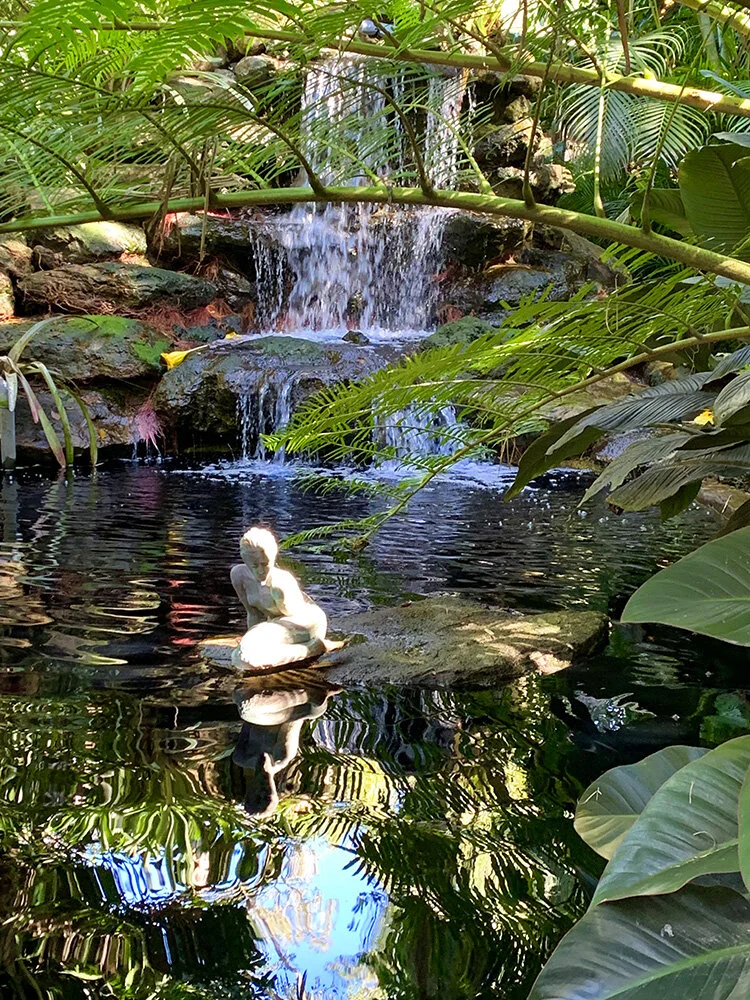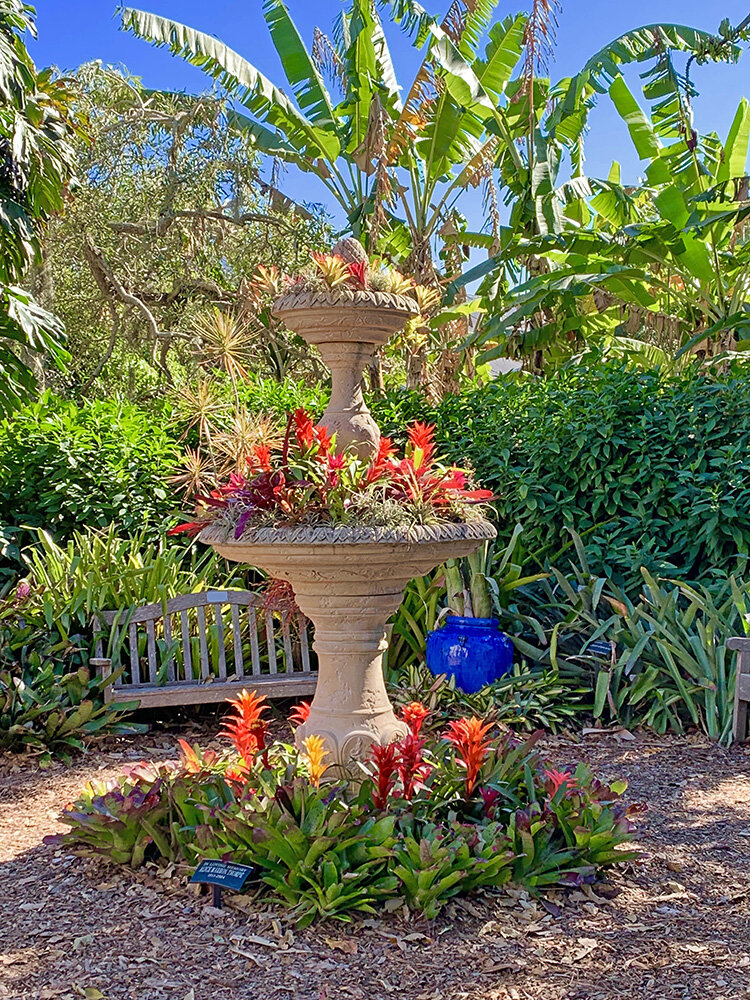Jewelbox Gardens of The Society of the Four Arts
/If you’re vacationing in West Palm Beach, be sure to visit the gardens at The Society of Four Arts. These two adjoining small gardens are little jewels in the heart of the city, and are open to the public with free admission.
Founded in 1936, The Society of the Four Arts is one of Palm Beach’s top cultural destinations, offering art exhibits, lectures, concerts, films, and educational programs. It is also home to two libraries and two beautiful gardens—the Four Arts Botanical Gardens and the Philip Hulitar Sculpture Garden.
As you enter through the magnificent wrought iron gates, you find yourself in the botanical gardens, which were designed in 1938 to showcase the horticulture and popular gardening themes of southern Florida. A beautiful Asian-style gate with a blue tiled roof welcomes you into the Chinese Garden and its formal square water lily pool. The surrounding garden features trees and shrubs pruned in cloud formations, bonsai specimens, and Asian statuary and lanterns accented with liriope, white orchids, and camellias.
As you step into the next garden spaces, you travel through a Tropical Garden, Jungle Garden, Palm Garden, and Bromeliad Garden. The central Formal Garden is adorned with a pool and fountain flanked by sheared hedges, liriope, and roses. The Madonna Garden in the corner provides a seating area for quiet contemplation, with a marble relief of the Madonna overlooking a circular pool surrounded by white begonias. The Spanish Facade Garden features a well overflowing with succulents and vines and a bench decorated with Spanish tile. The botanical gardens are maintained by the Garden Club of Palm Beach.
The adjoining two-acre sculpture garden was designed by Palm Beach resident and prominent American couturier Philip Hulitar and opened to the public in 1980. It is home to 20 sculptures by world-renowned artists such as Augustus Saint-Gaudens, Jim Dine, and Lawrence Holofcener, whose Allies depicts Franklin D. Roosevelt and Winston Churchill.
Both the botanical and the sculpture garden were redesigned in the mid-2000s by the firm Morgan Wheelock, Inc. New walkways, seating areas, and plantings were installed along with the elegant plaza paved in yellow and green Brazilian quartzite, the classical garden pavilion, vine-covered pergolas, reflecting pools, and fountains. The sculptures continue in the parking area, where Isamu Noguchi’s dramatic Intetra, a huge tetrahedron, overlooks the Intracoastal Waterway.
The Society of the Four Arts, 100 Four Arts Plaza, Palm Beach, FL 33480, 561-655-7227, fourarts.org
For more information, see The Garden Tourist’s Florida: A Guide to 80 Tropical Gardens in the Sunshine State
You Might Also Like






































































